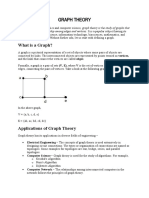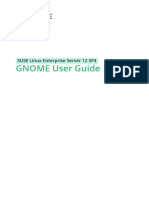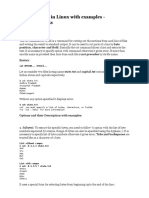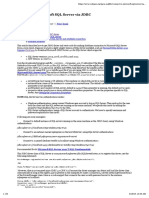0% found this document useful (0 votes)
78 views3 pagesVertex (Graph Theory) : Types of Vertices See Also References External Links
A vertex in graph theory is a fundamental unit that graphs are formed from. A vertex is usually represented by a circle with a label. Vertices can have different properties like degree, cut vertices, universal vertices. The neighborhood of a vertex is the induced subgraph formed by all adjacent vertices.
Uploaded by
Phoenix Liebe JeffCopyright
© © All Rights Reserved
We take content rights seriously. If you suspect this is your content, claim it here.
Available Formats
Download as PDF, TXT or read online on Scribd
0% found this document useful (0 votes)
78 views3 pagesVertex (Graph Theory) : Types of Vertices See Also References External Links
A vertex in graph theory is a fundamental unit that graphs are formed from. A vertex is usually represented by a circle with a label. Vertices can have different properties like degree, cut vertices, universal vertices. The neighborhood of a vertex is the induced subgraph formed by all adjacent vertices.
Uploaded by
Phoenix Liebe JeffCopyright
© © All Rights Reserved
We take content rights seriously. If you suspect this is your content, claim it here.
Available Formats
Download as PDF, TXT or read online on Scribd
/ 3














































































































